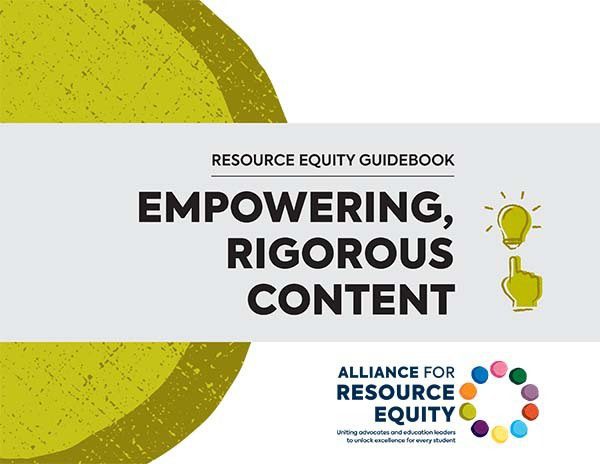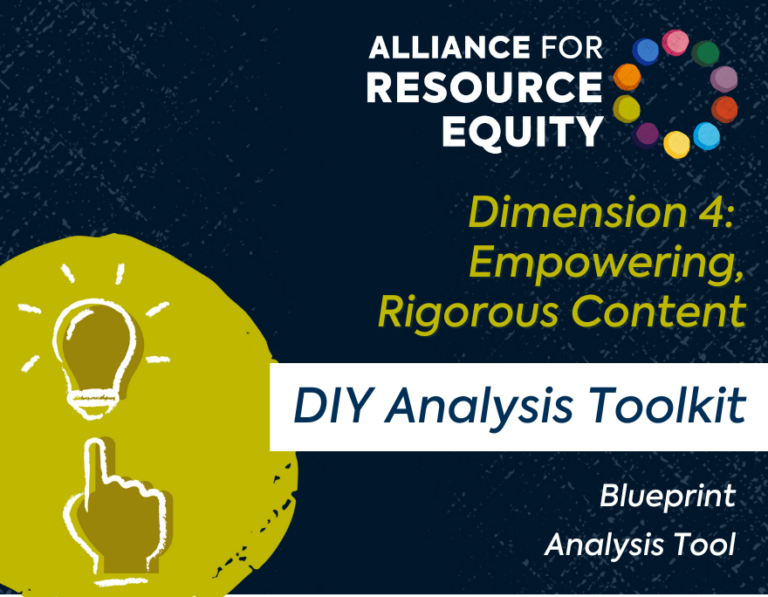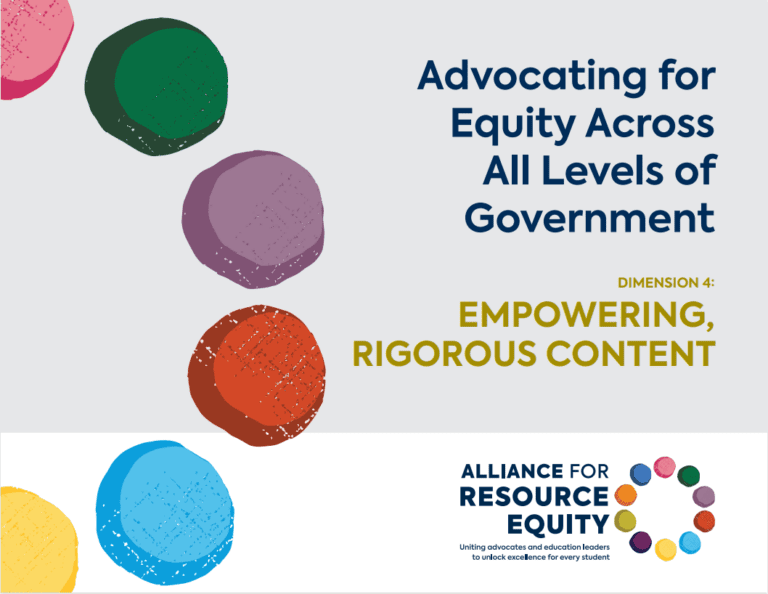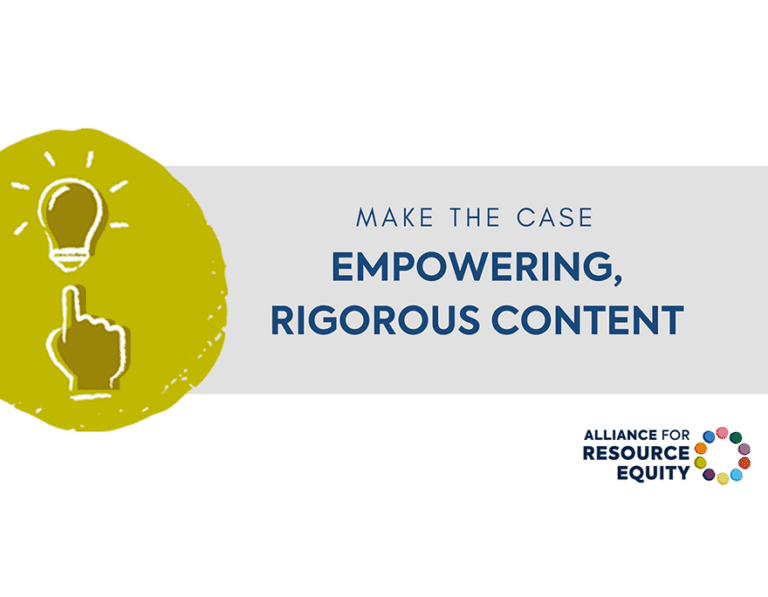Common Causes of Inequity
- Insufficient staff capacity and supports: A lack of support or expertise around how to apply high-quality culturally relevant curriculum, and potential implicit and/or explicit bias can hinder teachers’ consistent use of empowering, rigorous materials.
- Limited course pathways: Starting in early grades, a district’s course pathways can be developed in a way that makes it difficult for students to take and succeed in all the courses they need, when they need them (including advanced courses and their prerequisites).
- Rigid school scheduling practices: Because of rigid scheduling practices, students may not have sufficient time to engage in the arts and enrichment courses.
Key Questions to Explore
- Do all schools—and all classrooms within schools—consistently use materials that are aligned with grade-level standards?
- To what extent are curriculum and materials culturally relevant and reflective of the diversity of our student population?
- How do the rates of enrollment in advanced courses differ across student groups and/or across schools?
- How does the breadth and quality of arts and other enrichment course offerings differ across schools in our district?
What Does the Data Say About Empowering, Rigorous Content?
Our interactive data resource will help deepen your understanding of how dimensions of resource equity like Empowering, Rigorous Content play out in schools and districts across the country. As you navigate these interactive stories, you’ll learn how system shifts can lead to more equitable and better student experiences and outcomes.
Empowering, Rigorous Content Resources
Related Dimensions
No single dimension of education resource equity can unlock every student’s potential—but when dimensions are combined to meet students’ distinct needs, they are a strong foundation for unlocking better, more equitable experiences in school.
Explore the Instructional Time & Attention dimension, as this impacts the amount of access that students have to high-quality content and materials, as well as their enrollment in college-and-career-aligned courses, arts, and enrichment.




